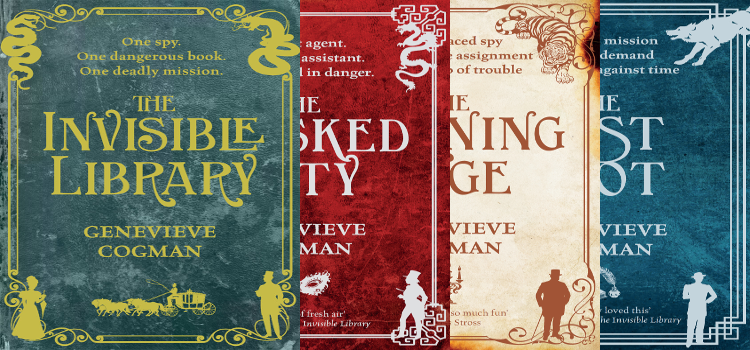- The Invisible Library
- The Masked City
- The Burning Page
- The Lost Plot
Writing a book that appeals to bibliophiles seems to me to be the easiest sell in the world. If the idea of an infinitely sprawling library, filled with unique books salvaged from across the multiverse, where time doesn’t pass for you while you are within its walls doesn’t appeal to you, I don’t know why you would read fantasy books at all. Fortunately, the Invisible Library is more than just a good premise.
We start with a cold open of a book heist at an evil Hogwarts, and it manages to give us both a kinetic introduction to the series, and establish Irene as a formidable protagonist unfazed by wizards, gargoyles or hell hounds.1 Over the course of the series there are any number of spins on iconic locations, and Cogman clearly revels in the opportunity to mix magic, technology, and iconic literary and pop culture settings. Our ‘home’ setting is a steampunk with vampires Victorian England,2 and even the Library is a mixture of old shelves, computers, and pneumatic tubes that give it a timeless quality.
The settings however, are just window dressing. What really makes the Invisible Library series are the character relationships. The first book rapidly establishes the mysterious student, an aloof supervisor, a collegiate rival, a thematically appropriate detective, and a not very committed antagonist, and all of these characters are given time to develop personality and connections with each other and Irene. Importantly these characters are allowed to be more than their archetypes, more than one thing.3 So the evil rival can also be good at her job and share the same goals as Irene, and we can respect her abilities if not her methods. Irene herself is an unusual character, someone in the middle of their career: confident in her abilities, senior enough to supervise, but with room to grow before they reach the top of their profession.
These books are also noteworthy for their tone. Serendipitously, I picked up the Invisible Library straight after finishing Just One Damn Thing After Another. Both are books where the tone varies between light comedy and violent drama, but only the Invisible Library manages to merge these tones cohesively. Irene can be charmed by a narcissistic fairy or discover a victim skinned alive, and it all feels of a piece. It’s a universe that spans the breadth of literature, and it therefore feels like anything can happen.
Recommended for bibliophiles everywhere.
